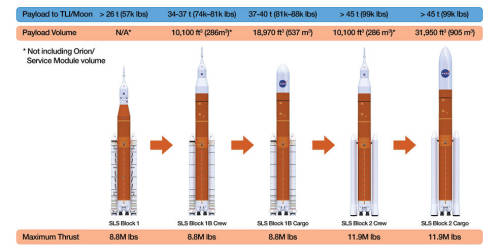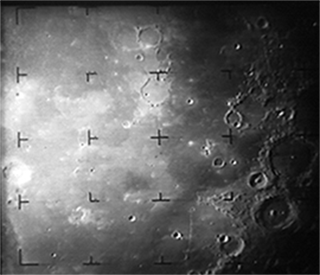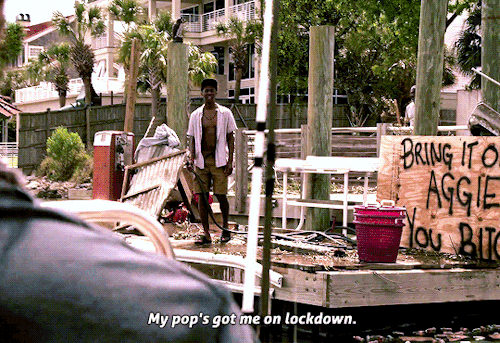The International Space Station Through The Eyes Of Little Earth!
The International Space Station Through the Eyes of Little Earth!
Currently, six humans are living and working on the International Space Station, which orbits 250 miles above our planet at 17,500mph. Accompanying their mission is a zero-g indicator, informally known as “Little Earth”.
Greetings fellow Earthlings! Curious about my first week on the International Space Station? What does a normal day look like when you’re living and working hundreds of miles above Earth? Take a look at some photos from my first week, when I was still learning the ropes from my new roommates!
Welcome Ceremony
Talk about a warm welcome! I arrived on March 3, 2019 when the SpaceX Crew Dragon docked to the Space Station for the first time. This historic mission marked the first time a commercially built American spacecraft intended for human spaceflight docked to the orbital lab. Though un-crewed, Dragon was carrying two very important passengers – my space travel companion Ripley and myself, Astronaut Little Earth. During my three-day introduction to the station, two Expedition 59 astronauts, Anne McClain and David Saint-Jacques, taught me what it takes to be a Space Station crew member!
Earth Watching

First thing’s first – the VIEW. After the traditional hatch opening welcome ceremony, I was off to the Cupola Observational Module. Designed for the observation of operations outside the station, this module’s six side windows also provide spectacular views of our Mother Earth! My roommate Anne McClain introduced me to the beautiful vantage point of space. Clearly, I was a little star-struck.
Space Suit Sizing

Next, it was time to get to work – lending a hand with Anne McClain’s space suit sizing. Did you know you actually grow in zero gravity? Astronaut McClain has grown two inches on her current mission in space. Crew members must account for this change in growth to know if different components need to be switched out of their individual spacesuit for a better fit. When pressurized and filled with oxygen, the spacesuits become stiff objects around the astronauts inside, making it critical they fit comfortably. These spacesuits are essentially mini spacecraft that provide protection and a means of survival for the astronauts as they venture outside the space station and into the harsh environment of space.
Space Coffee!

One Café Latte, please! I was thrilled to find out that even in space, the morning begins with a pick me up. Due to microgravity, liquids tend to get sticky and cling to the wall of cups, making these plastic pouches and straws necessary for consumption. Astronauts in 2015 got an upgrade to their morning cup of joe thanks to SpaceX, Lavazza and the Italian Space Agency. Named the ISSpresso, a microgravity coffee maker has brought authentic Italian espresso with zero-G coffee cups onto the International Space Station.
Emergency Mask Donning

Fueled up and ready for the day, my next agenda item was emergency preparedness practice. There is no 9-1-1 in space, and three events that could pose a dangerous threat to the Space Station include a fire, a depressurization event or an ammonia breakout. Here, Canadian Astronaut David Saint-Jacques and I practiced emergency mask donning in the unlikely event of an ammonia leak into the station’s atmosphere.
Preventative Maintenance

From astronaut to astro-plumber, I traded my mask for goggles with Astronaut Anne McClain during a briefing on plumbing routine maintenance. Because the International Space Station never returns to Earth, the crew is trained to regularly inspect, replace and clean parts inside the station.
Daily Exercise

Talk about staying healthy! After a busy day, Astronaut McClain and I continued to hit the ground running, literally. Crew members are required to work out daily for about two hours to help keep their heart, bones and muscles strong in zero gravity. The harness McClain is wearing is very much like a backpacking harness, designed to evenly distribute weight across her upper body and is attached to a system of bungees and cords. Depending on the tension in these attachments, a specific load of pressure is applied to her body onto the machine.
Strength Training in Zero-G

Watch out, deadlift going on. Running isn’t the only gym exercise they have onboard; strength training is also incorporated into the daily exercise regime.
Robotics Operations: Canadarm2

You can look, just don’t touch they told me. Whoops. This was a definite highlight, my Canadarm 2 briefing. That black nob by my hand is the translational hand controller. It operates the up and down function of the 57.7-foot-long robotic arm. The Canadarm2 lends a literal helping hand with many station functions, using a “hand” known as a Latching End Effector to perform tasks such as in orbit maintenance, moving supplies and performing “cosmic catches”.
Crew Group Dinner

Whew, you work up a big appetite working on the Space Station. Ending the day, I was introduced to a crew favorite, group dinner! Astronauts and cosmonauts from around the world come together on the orbital lab and bring with them a variety of cultures and … food! Though each country is responsible for feeding its own members, when on board the astronauts can share as they please. A new friend of mine, Paxi from the European Space Agency, welcomed my visit and we split a delicious space-shrimp cocktail.
And that’s a wrap to a busy first week aboard the International Space Station! Learn more about what it means to live and work aboard the International Space Station, and click here to see if you have what it takes to become a NASA Astronaut. Until next time!
Make sure to follow us on Tumblr for your regular dose of space: http://nasa.tumblr.com
More Posts from Mousoudi20 and Others
Several countries presented their business potentials at dedicated stands - like Denmark. #ITER #IBF19 #WeAreITER https://t.co/Symkfl50mh
Our Eyes in the Sky See Toxic Waters
Warm summer temperatures often lead to dangerous blooms of phytoplankton in lakes, reservoirs and along our coastlines. These toxin-containing aquatic organisms can sicken people and pets, contaminate drinking water, and force closures at boating and swimming sites.

In this image, a severe bloom of toxic blue-green algae is spreading across the western half of Lake Erie. Taken on July 30, 2019 by the Operational Land Imager on our Landsat 8 satellite, this image shows green patches where the bloom was most dense and where toxicity levels were unsafe for recreational activities. Around the time of this image, the bloom covered about 300 square miles of Lake Erie’s surface, roughly the size of New York City. By August 13, the bloom had doubled to more than 620 square miles. That’s eight times the size of Cleveland.

The dominant organism—a Microcystis cyanobacteria—produces the toxin microcystin, can cause liver damage, numbness, dizziness, and vomiting. On July 29, 2019, the National Oceanic Atmospheric Administration (NOAA) reported unsafe toxin concentrations in Lake Erie and have since advised people (and their pets) to stay away from areas where scum is forming on the water surface.
You can stay informed about harmful algal blooms using a new mobile app that will send you alerts on potentially harmful algal blooms in your area. Called CyAN, it’s based on NASA satellite data of the color changes in lakes and other bodies of water. It serves as our eye-in-the-sky early warning system, alerting the public and local officials to when dangerous waters may be in bloom.
Make sure to follow us on Tumblr for your regular dose of space: http://nasa.tumblr.com.
We Like Big Rockets and We Cannot Lie: Saturn V vs. SLS
On this day 50 years ago, human beings embarked on a journey to set foot on another world for the very first time.

At 9:32 a.m. EDT, millions watched as Apollo astronauts Neil Armstrong, Buzz Aldrin and Michael Collins lifted off from Launch Pad 39A at the Kennedy Space Center in Cape Canaveral, Florida, flying high on the most powerful rocket ever built: the mighty Saturn V.

As we prepare to return humans to the lunar surface with our Artemis program, we’re planning to make history again with a similarly unprecedented rocket, the Space Launch System (SLS). The SLS will be our first exploration-class vehicle since the Saturn V took American astronauts to the Moon a decade ago. With its superior lift capability, the SLS will expand our reach into the solar system, allowing astronauts aboard our Orion spacecraft to explore multiple, deep-space destinations including near-Earth asteroids, the Moon and ultimately Mars.

So, how does the Saturn V measure up half a century later? Let’s take a look.
Mission Profiles: From Apollo to Artemis
Saturn V

Every human who has ever stepped foot on the Moon made it there on a Saturn V rocket. The Saturn rockets were the driving force behind our Apollo program that was designed to land humans on the Moon and return them safely back to Earth.

Developed at our Marshall Space Flight Center in the 1960s, the Saturn V rocket (V for the Roman numeral “5”) launched for the first time uncrewed during the Apollo 4 mission on November 9, 1967. One year later, it lifted off for its first crewed mission during Apollo 8. On this mission, astronauts orbited the Moon but did not land. Then, on July 16, 1969, the Apollo 11 mission was the first Saturn V flight to land astronauts on the Moon. In total, this powerful rocket completed 13 successful missions, landing humans on the lunar surface six times before lifting off for the last time in 1973.
Space Launch System (SLS)

Just as the Saturn V was the rocket of the Apollo generation, the Space Launch System will be the driving force behind a new era of spaceflight: the Artemis generation.

During our Artemis missions, SLS will take humanity farther than ever before. It is the vehicle that will return our astronauts to the Moon by 2024, transporting the first woman and the next man to a destination never before explored – the lunar South Pole. Over time, the rocket will evolve into increasingly more powerful configurations to provide the foundation for human exploration beyond Earth’s orbit to deep space destinations, including Mars.
SLS will take flight for the first time during Artemis 1 where it will travel 280,000 miles from Earth – farther into deep space than any spacecraft built for humans has ever ventured.
Size: From Big to BIGGER
Saturn V

The Saturn V was big.
In fact, the Vehicle Assembly Building at Kennedy Space Center is one of the largest buildings in the world by volume and was built specifically for assembling the massive rocket. At a height of 363 feet, the Saturn V rocket was about the size of a 36-story building and 60 feet taller than the Statue of Liberty!
Space Launch System (SLS)

Measured at just 41 feet shy of the Saturn V, the initial SLS rocket will stand at a height of 322 feet. Because this rocket will evolve into heavier lift capacities to facilitate crew and cargo missions beyond Earth’s orbit, its size will evolve as well. When the SLS reaches its maximum lift capability, it will stand at a height of 384 feet, making it the tallest rocket in the world.
Power: Turning Up the Heat
Saturn V
For the 1960s, the Saturn V rocket was a beast – to say the least.
Fully fueled for liftoff, the Saturn V weighed 6.2 million pounds and generated 7.6 million pounds of thrust at launch. That is more power than 85 Hoover Dams! This thrust came from five F-1 engines that made up the rocket’s first stage. With this lift capability, the Saturn V had the ability to send 130 tons (about 10 school buses) into low-Earth orbit and about 50 tons (about 4 school buses) to the Moon.
Space Launch System (SLS)

Photo of SLS rocket booster test
Unlike the Saturn V, our SLS rocket will evolve over time into increasingly more powerful versions of itself to accommodate missions to the Moon and then beyond to Mars.

The first SLS vehicle, called Block 1, will weigh 5.75 million pounds and produce 8.8 million pounds of thrust at time of launch. That’s 15 percent more than the Saturn V produced during liftoff! It will also send more than 26 tons beyond the Moon. Powered by a pair of five-segment boosters and four RS-25 engines, the rocket will reach the period of greatest atmospheric force within 90 seconds!

Following Block 1, the SLS will evolve five more times to reach its final stage, Block 2 Cargo. At this stage, the rocket will provide 11.9 million pounds of thrust and will be the workhorse vehicle for sending cargo to the Moon, Mars and other deep space destinations. SLS Block 2 will be designed to lift more than 45 tons to deep space. With its unprecedented power and capabilities, SLS is the only rocket that can send our Orion spacecraft, astronauts and large cargo to the Moon on a single mission.
Build: How the Rockets Stack Up
Saturn V

The Saturn V was designed as a multi-stage system rocket, with three core stages. When one system ran out of fuel, it separated from the spacecraft and the next stage took over. The first stage, which was the most powerful, lifted the rocket off of Earth’s surface to an altitude of 68 kilometers (42 miles). This took only 2 minutes and 47 seconds! The first stage separated, allowing the second stage to fire and carry the rest of the stack almost into orbit. The third stage placed the Apollo spacecraft and service module into Earth orbit and pushed it toward the Moon. After the first two stages separated, they fell into the ocean for recovery. The third stage either stayed in space or crashed into the Moon.
Space Launch System (SLS)
Much like the Saturn V, our Space Launch System is also a multi-stage rocket. Its three stages (the solid rocket boosters, core stage and upper stage) will each take turns thrusting the spacecraft on its trajectory and separating after each individual stage has exhausted its fuel. In later, more powerful versions of the SLS, the third stage will carry both the Orion crew module and a deep space habitat module.
A New Era of Space Exploration
Just as the Saturn V and Apollo era signified a new age of exploration and technological advancements, the Space Launch System and Artemis missions will bring the United States into a new age of space travel and scientific discovery.
Join us in celebrating the 50th anniversary of the Apollo 11 Moon landing and hear about our future plans to go forward to the Moon and on to Mars by tuning in to a special two-hour live NASA Television broadcast at 1 p.m. ET on Friday, July 19. Watch the program at www.nasa.gov/live.
Make sure to follow us on Tumblr for your regular dose of space: http://nasa.tumblr.com.
The scaffolding has come off the lower cylinder of the #ITER #cryostat. Clad in thin film it is now being scanned by metrologists for reverse engineering and will then be cocooned for storage until assembly. #fusionenergy #WeAreITER https://t.co/DOag9p1rPp https://t.co/xoi5GTq0Vc
Another #LEGO model! ENGAGE, Europe's architect/engineer contractor for #ITER construction, presents a colourful LEGO model of the #Tokamak Building at their #IBF19 exhibition stand. #WeAreITER @fusionforenergy https://t.co/4w7rTpsLSU

If #NationalCheeseDay has you thinking about the Moon, you’re not alone. 🧀
In 1965, the Ranger 9 probe captured these sharp images of a cratered lunar surface just moments before its planned impact. What we learned paved the way for Apollo. #Apollo50th

2019 August 14
Saturn Behind the Moon Image Credit: Peter Patonai (Astroscape Photography)
Explanation: What’s that next to the Moon? Saturn. In its monthly trip around the Earth – and hence Earth’s sky – our Moon passed nearly in front of Sun-orbiting Saturn earlier this week. Actually the Moon passed directly in front of Saturn from the viewpoints of a wide swath of Earth’s Southern Hemisphere. The featured image from Sydney, Australia captured the pair a few minutes before the eclipse. The image was a single shot lasting only 1/500th of a second, later processed to better highlight both the Moon and Saturn. Since Saturn is nearly opposite the Sun, it can be seen nearly the entire night, starting at sunset, toward the south and east. The gibbous Moon was also nearly opposite the Sun, and so also visible nearly the entire night – it will be full tomorrow night. The Moon will occult Saturn again during every lap it makes around the Earth this year.
∞ Source: apod.nasa.gov/apod/ap190814.html
Ok I’m gonna try and sculpt Donald Duck without looking at it and bake and paint the result


The final stretch.



-
 muimui234 liked this · 11 months ago
muimui234 liked this · 11 months ago -
 roxas--munchkin liked this · 2 years ago
roxas--munchkin liked this · 2 years ago -
 adleisiau liked this · 2 years ago
adleisiau liked this · 2 years ago -
 firmmen25 liked this · 3 years ago
firmmen25 liked this · 3 years ago
